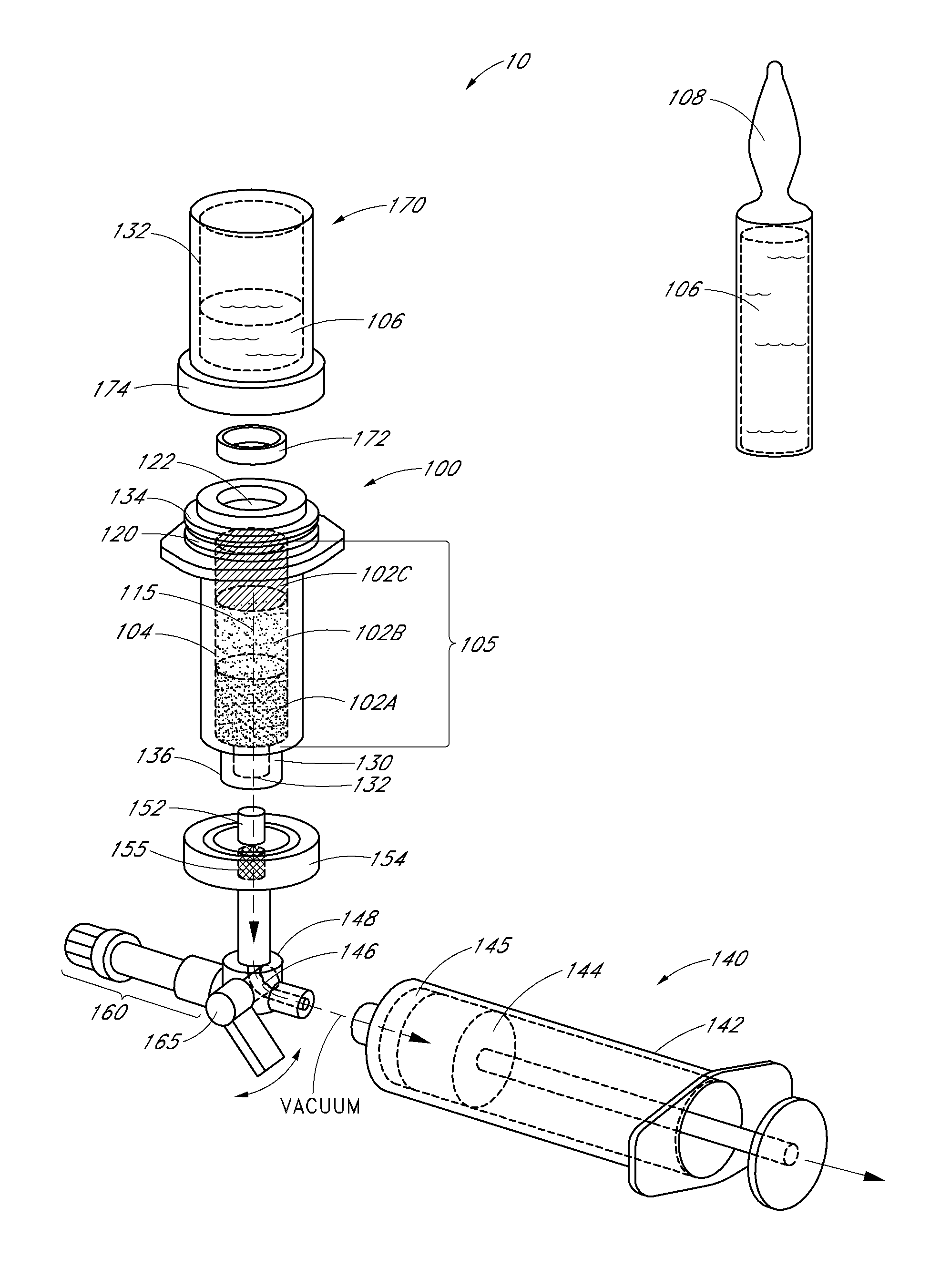Bone treatment systems
a technology of injection system and bone cement, which is applied in the field of bone cement and injection system, can solve the problems of fractures in the spine and hips, affecting mobility and quality of life, and the medical advances aimed at slowing or arresting bone loss from aging have not provided solutions to this problem, so as to achieve a greater degree of control over the injection of cement and improve the effect of outcomes
- Summary
- Abstract
- Description
- Claims
- Application Information
AI Technical Summary
Benefits of technology
Problems solved by technology
Method used
Image
Examples
Embodiment Construction
[0034]For purposes of understanding the principles of the invention, reference will now be made to the embodiments illustrated in the drawings and accompanying text that describe the invention. As background, in some embodiments, a vertebroplasty procedure using the invention could introduce the injector of FIG. 1 through a pedicle of a vertebra, or in a parapedicular approach, for accessing the osteoporotic cancellous bone. The initial aspects of the procedure can be similar to a conventional percutaneous vertebroplasty wherein the patient is placed in a prone position on an operating table. The patient is typically under conscious sedation, although general anesthesia is an alternative. The physician injects a local anesthetic (e.g., 1% Lidocaine) into the region overlying the targeted pedicle or pedicles as well as the periosteum of the pedicle(s). Thereafter, the physician can use a scalpel to make a 1 to 5 mm skin incision over each targeted pedicle. Thereafter, the bone cement...
PUM
| Property | Measurement | Unit |
|---|---|---|
| pressures | aaaaa | aaaaa |
| pressures | aaaaa | aaaaa |
| diameter | aaaaa | aaaaa |
Abstract
Description
Claims
Application Information
 Login to View More
Login to View More - R&D
- Intellectual Property
- Life Sciences
- Materials
- Tech Scout
- Unparalleled Data Quality
- Higher Quality Content
- 60% Fewer Hallucinations
Browse by: Latest US Patents, China's latest patents, Technical Efficacy Thesaurus, Application Domain, Technology Topic, Popular Technical Reports.
© 2025 PatSnap. All rights reserved.Legal|Privacy policy|Modern Slavery Act Transparency Statement|Sitemap|About US| Contact US: help@patsnap.com



